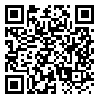Volume 5, Issue 3 (9-2016)
JCP 2016, 5(3): 359-368 |
Back to browse issues page
Download citation:
BibTeX | RIS | EndNote | Medlars | ProCite | Reference Manager | RefWorks
Send citation to:



BibTeX | RIS | EndNote | Medlars | ProCite | Reference Manager | RefWorks
Send citation to:
Ghanbarzadeh B, Safaie N, Mohammadi Goltapeh E, Rezaee Danesh Y, Khelghatibana F. Biological control of Fusarium basal rot of onion using Trichoderma harzianum and Glomus mosseae. JCP 2016; 5 (3) :359-368
URL: http://jcp.modares.ac.ir/article-3-7703-en.html
URL: http://jcp.modares.ac.ir/article-3-7703-en.html
Bahareh Ghanbarzadeh1  , Naser Safaie *
, Naser Safaie *  1, Ebrahim Mohammadi Goltapeh1
1, Ebrahim Mohammadi Goltapeh1  , Younes Rezaee Danesh2
, Younes Rezaee Danesh2  , Fatemeh Khelghatibana3
, Fatemeh Khelghatibana3 
 , Naser Safaie *
, Naser Safaie *  1, Ebrahim Mohammadi Goltapeh1
1, Ebrahim Mohammadi Goltapeh1  , Younes Rezaee Danesh2
, Younes Rezaee Danesh2  , Fatemeh Khelghatibana3
, Fatemeh Khelghatibana3 
1- Department of Plant Pathology, Faculty of Agriculture, Tarbiat Modares University, Tehran, Iran.
2- Department of Plant Protection, Faculty of Agriculture, University of Urmia, Urmia, Iran.
3- Seed and Plant Certification and Registration Institute, Karaj, Iran.
2- Department of Plant Protection, Faculty of Agriculture, University of Urmia, Urmia, Iran.
3- Seed and Plant Certification and Registration Institute, Karaj, Iran.
Abstract: (7386 Views)
Fusarium proliferatum, as a toxigenic fungus, is one of the important agents of onion basal rot (FBR). Among the control methods of the disease, biological control is considered as one of the best options. In this study, Trichoderma harzianum strain T100 at the rate of 1 × 106 cfu/g was mixed with pot soil artificially infested with F. proliferatum. Also Glomus mosseae was applied to each pot at the rate of three grams of soil containing 80 chlamydospores/ml. Combination of T100 and G. mosseae was used as well. Onion seeds were disinfected & planted in pots, arranged in completely randomized design in 4 replicates under greenhouse condition and finally, the individual or combined effects of these bioagents were assessed on FBR control and also root colonization by Glomus 23, 30 and 36 days after sowing. Inoculation of Arbuscular mycorrhizae improved onion growth effectively, but its biocontrol effect was not considerable. Trichoderma amended soil decreased disease incidence by 25% but its usefulness as biocontrol agent was reduced in the course of time. AM root colonization was decreased in plants in presence of Trichoderma. Nevertheless, the disease control in combination of Trichoderma and Glomus treatment was better than the treatments by each one of the agents singly. The disease control achieved by fungicide seed treatment was inferior to that of Trichoderma and Glomus in combination.
Article Type: Full Paper |
Subject:
Biocontrol of Plant Diseases
Received: 2014/12/8 | Accepted: 2016/05/17 | Published: 2016/06/1
Received: 2014/12/8 | Accepted: 2016/05/17 | Published: 2016/06/1
| Rights and permissions | |
 |
This work is licensed under a Creative Commons Attribution-NonCommercial 4.0 International License. |







